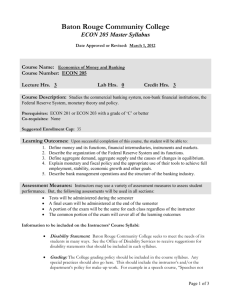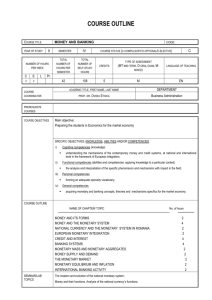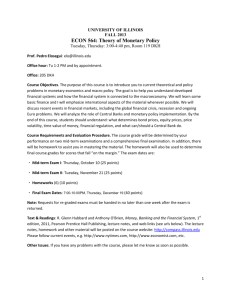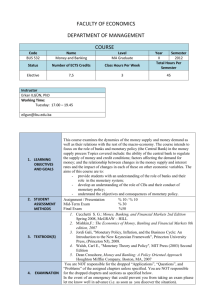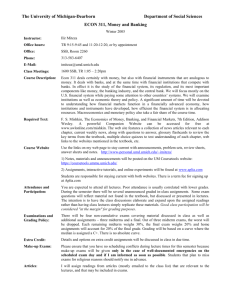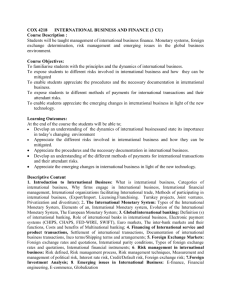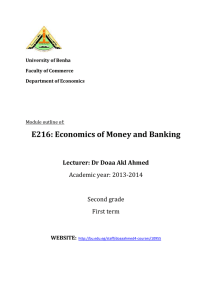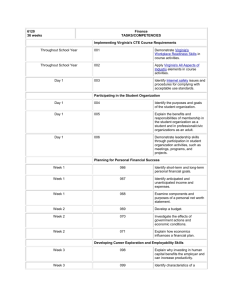Svalestad - Department of Economics
advertisement
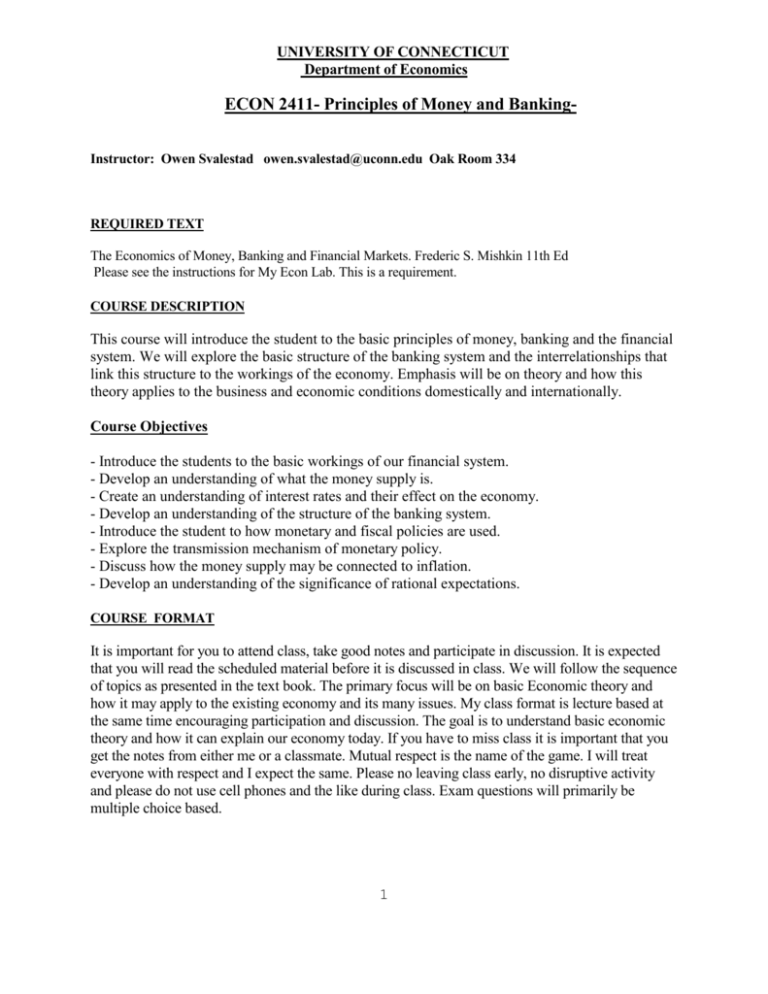
UNIVERSITY OF CONNECTICUT Department of Economics ECON 2411- Principles of Money and BankingInstructor: Owen Svalestad owen.svalestad@uconn.edu Oak Room 334 REQUIRED TEXT The Economics of Money, Banking and Financial Markets. Frederic S. Mishkin 11th Ed Please see the instructions for My Econ Lab. This is a requirement. COURSE DESCRIPTION This course will introduce the student to the basic principles of money, banking and the financial system. We will explore the basic structure of the banking system and the interrelationships that link this structure to the workings of the economy. Emphasis will be on theory and how this theory applies to the business and economic conditions domestically and internationally. Course Objectives - Introduce the students to the basic workings of our financial system. - Develop an understanding of what the money supply is. - Create an understanding of interest rates and their effect on the economy. - Develop an understanding of the structure of the banking system. - Introduce the student to how monetary and fiscal policies are used. - Explore the transmission mechanism of monetary policy. - Discuss how the money supply may be connected to inflation. - Develop an understanding of the significance of rational expectations. COURSE FORMAT It is important for you to attend class, take good notes and participate in discussion. It is expected that you will read the scheduled material before it is discussed in class. We will follow the sequence of topics as presented in the text book. The primary focus will be on basic Economic theory and how it may apply to the existing economy and its many issues. My class format is lecture based at the same time encouraging participation and discussion. The goal is to understand basic economic theory and how it can explain our economy today. If you have to miss class it is important that you get the notes from either me or a classmate. Mutual respect is the name of the game. I will treat everyone with respect and I expect the same. Please no leaving class early, no disruptive activity and please do not use cell phones and the like during class. Exam questions will primarily be multiple choice based. 1 GRADING Your final grade will be determined in the following manner: Subject to change 1) Chapter Quizs- 33% Midterm- 33% Final- 33% ACADEMIC HONESTY Studying with a classmate or a small group or tutoring is encouraged. Any student caught cheating on an exam or otherwise submitting graded work that is not entirely their own will receive a grade of zero for the offending activity and the offense will be reported to the Department Chair and the Dean's office. The University policy on academic misconduct applies and you are advised to read that policy, which is posted on Course Compass under Course Materials. HOW TO GET HELP Please note my scheduled office hours. In addition to that I can be reached either via cell phone or email. I am very available however it is your responsibility to let me know if you have a problem. My Econ Lab will have many sources of information that will be helpful. OUTLINE OF TOPICS- Subject to change Part l. Introduction Chapter 1- Why Study Money, Banking and Financial Markets- Read as an introduction Chapter 2- An Overview of the Financial System Chapter 3- What Is Money Part 2- Financial Markets Chapter 4- The Meaning of Interest Rates Chapter 5- The Behavior of Interest Rates Chapter 6- The Risk and Term Structure of Interest Rates Chapter 7- The Stock Market Part 3- Financial Institutions Chapter 8- An Economic Analysis of Financial Structure Chapter 9- Banking and Management of Financial Institutions Chapter 10- Economic Analysis of Financial Regulation Chapter 12- Financial Crisis Part 4- Central Banking and the Conduct of Monetary Policy 2 MIDTERM Chapter 13- Central Banks and the Federal Reserve System Chapter 14- The Money Supply Process Chapter 15- Tools of Monetary Policy Chapter 16- Monetary Policy: Strategy and Tactics Part 5- Monetary Theory Chapter 19- Quantity Theory, Inflation and the Demand For Money Chapter 21- Monetary policy and Aggregate Demand Chapter 22- Aggregate Demand and Supply Analysis Chapter 23- Monetary Policy Theory Chapter 24- Role of Expectations in Monetary Policy 3 Non Cumulative Final Exam

